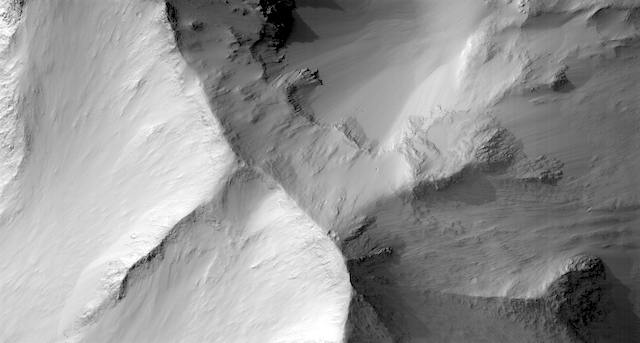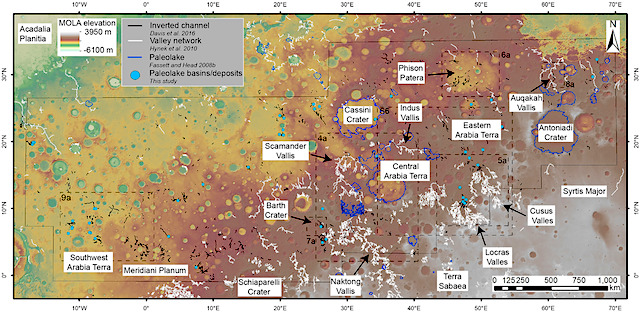![Fig. 4 [in part]: Comparison between the nominal diurnal cycle (blue asterisks) just prior to storm onset (sols 2060–2070) and the highly dusty diurnal cycle (red dots) within the highly dusty phase of the global dust storm (sols 2085–2095).... jgre21177-fig-0004-m](http://redplanet.asu.edu/wp-content/uploads/2019/07/jgre21177-fig-0004-m.jpg) [Editor’s note: From a paper by Daniel Viúdez‐Moreiras and 14 co-authors recently published in the Journal of Geophysical Research.]
[Editor’s note: From a paper by Daniel Viúdez‐Moreiras and 14 co-authors recently published in the Journal of Geophysical Research.]
Effects of the MY34/2018 Global Dust Storm as Measured by MSL REMS in Gale Crater
• Atmospheric opacity over Gale Crater was increased by more than 8 times and disturbed all the atmospheric variables measured by REMS
• REMS data suggest that the nighttime near‐surface atmosphere stability was reduced and its water abundance increased during the GDS
• The semidiurnal mode peaked after the local opacity maximum, suggesting different dust abundance inside and outside Gale
The Rover Environmental Monitoring Station (REMS) instrument is on board NASA’s Mars Science Laboratory (MSL) Curiosity rover. REMS has been measuring surface pressure, air, and ground brightness temperature, relative humidity, and ultraviolet (UV) irradiance since MSL’s landing in 2012. In Mars Year (MY) 34 (2018) a global dust storm reached Gale Crater at Ls ~ 190°.
REMS offers a unique opportunity to better understand the impact of a global dust storm on local environmental conditions, which complements previous observations by the Viking landers and Mars Exploration Rovers. All atmospheric variables measured by REMS are strongly affected albeit at different times.
During the onset phase, the daily maximum UV radiation decreased by 90% between sols 2075 (opacity ~1) and 2085 (opacity ~8.5). The diurnal range in ground and air temperatures decreased by 35 and 56 K, respectively, with also a diurnal‐average decrease of ~2 and 4 K respectively.
The maximum relative humidity, which occurs right before sunrise, decreased to below 5%, compared with prestorm values of up to 29%, due to the warmer air temperatures at night, while the inferred water vapor abundance suggests an increase during the storm.
Between sols 2085 and 2130, the typical nighttime stable inversion layer was absent near the surface as ground temperatures remained warmer than near‐surface air temperatures.
Finally, the frequency domain behavior of the diurnal pressure cycle shows a strong increase in the strength of the semidiurnal and terdiurnal modes peaking after the local opacity maximum, also suggesting differences in the dust abundance inside and outside Gale. [More at link]











![NASA's Mars rover Curiosity acquired this image using its Right Navigation Cameras (Navcams) on Sol 2473 Credit: NASA/JPL-Caltech [Ed. note: contrast adjusted] NRB_617033844EDR_F0762360NCAM00263M_-br2](http://redplanet.asu.edu/wp-content/uploads/2019/07/NRB_617033844EDR_F0762360NCAM00263M_-br2.jpg)


![Fig. 4 [in part]: Comparison between the nominal diurnal cycle (blue asterisks) just prior to storm onset (sols 2060–2070) and the highly dusty diurnal cycle (red dots) within the highly dusty phase of the global dust storm (sols 2085–2095).... jgre21177-fig-0004-m](http://redplanet.asu.edu/wp-content/uploads/2019/07/jgre21177-fig-0004-m.jpg)


